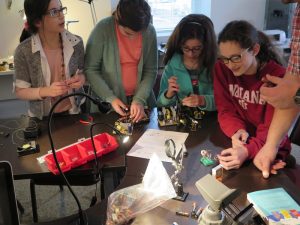
Last night PCAUXCOM, the local Amateur Radio emergency communications group, began a FCC Amateur Radio operator’s license class at Castlemakers. It’s a great way to study for the test – although you can self-learn the material to get a license.
What they’re doing however embodies what often happens with vocations and hobbies – people practicing and learning with other people. Not only to learn quicker, but for enjoyment too. It can help make challenging things easier; in some cases even provide focus and accountability. In today’s noisy world with more opportunities than time that’s often difficult.
Makerspaces, and one of Castlemakers’ goals in particular, can bring communities of people together to share knowledge and skills by providing a space, events, equipment, and even just a reason for people to share something. Whether it be a CoderDojo (bringing kids and programmers together to explore programing languages), folks interested in 3D Printing (which also met last night to see printers in use at a high school classroom), or Amateur Radio operators and emergency volunteers assisting others to get a communications equipment operating license.
The PCAUXCOM class is meeting every Monday evenings from 6:30 to 8 pm at Castlemakers, it’s free and open to all, and still not too late to join in. They will also be offering a licensing test locally here in Greencastle just after the course is finished, contact George Edenfield for more information.

